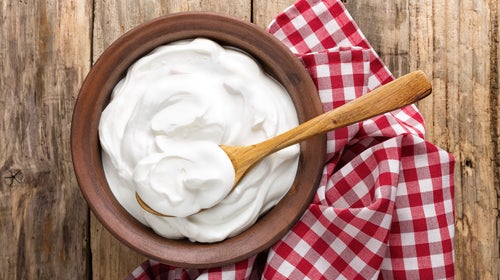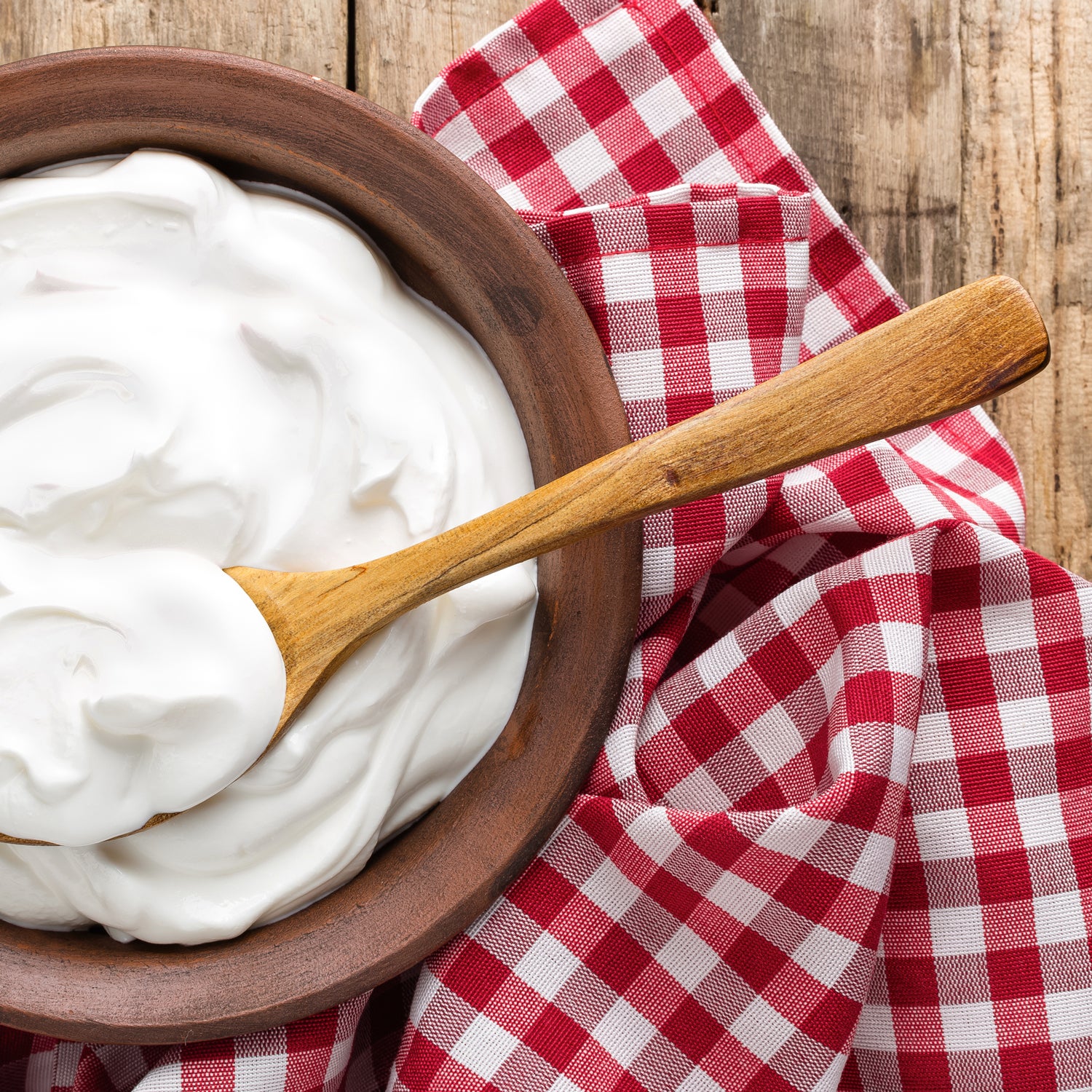Americans spend $7.7 billion on yogurt every year, according to market research firm . But┬аitтАЩs getting increasingly difficult to choose among the staggering array of flavors, styles, textures, milk sources, and fat contents on the shelf, with each making a case for why itтАЩs the healthiest (and tastiest) option on the market. So we called in an expert, Melissa Phillips, clinical nutritionist at the University of Wisconsin Hospital and Clinics in Madison, for shopping tips.
The Type: Full Fat
What ItтАЩs Good For: When youтАЩre hungry, plain full-fat yogurt makes the perfect snack. In moderation, fat keeps you feeling satiated longer. To punch up protein, the full-fat variety delivers about 300 milligrams () of calcium per cup.
Yum Factor: Creamy, rich, and delicious. Because flavors stick better to fat molecules, this yogurt delivers a richer taste.
Watch Out For: At 150 calories per cup, full-fat yogurt has as many calories as . Phillips recommends keeping portions in check.
The Type: Low/Nonfat
What ItтАЩs Good For: Similar to its full fat counterpart, low-fat yogurt delivers gut-healthy probiotics. When the fat is removed, the calcium gets concentrated, so low-fat varieties actually contain тАФabout 450 milligrams per eight ounces.
Yum Factor: Like drinking skim or low-fat milk instead of whole, thereтАЩs no getting around the thinner body, despite the thickeners many brands add to pump up the texture. If you go this route, embrace the liquid-forward texture and avoid ingredient lists that include fake texture enhancers.
Watch Out For: Sugar. To compensate for the lack of fat, many brands , which can show up as dextrose and fructose, even in тАЬplainтАЭ varieties. The same amount of low-fat yogurt may have nearly as many calories as full fat, , which is worse for you. The low-fat yogurt market is also riddled with sugary add-ins like fruit on the bottom, granola on top, and/or lots of sweet flavorings. тАЬIf youтАЩre eating red velvet cakeтАУflavored yogurt, youтАЩre actually just having dessert,тАЭ says Phillips.
The Type: Greek
What ItтАЩs Good For: Greek yogurt has enjoyed superstar status in the dairy aisle for some time now, thanks to its reputation as a protein powerhouse, with double the amount (20 grams in an eight-ounce serving) than standard yogurt. But it has other perks, too, namely less sugar. тАЬTo make Greek yogurt, manufacturers strain regular yogurt multiple times to remove the whey, which also removes much of the lactose,тАЭ Phillips says. тАЬThat also makes it better for people with lactose intolerance.тАЭ
Yum Factor: This straining leaves behind a yogurt with serious tang. Greek yogurtтАЩs hallmark taste is often said to be the truest example of what totally natural yogurt should taste like without any additives or flavorings.
Watch Out For: Counter to their healthy origins, Greek yogurt brands have started adding ingredients more reminiscent of candy than of health food. You can now find pie-flavored varieties that pack as much sugar as a slice of the real thing, so be a vigilant label reader and choose wisely.
The Type: Skyr
What ItтАЩs Good For: This. ItтАЩs made from skim milk, which is warmed, fortified with live bacteria cultures, and strained of its liquid whey, which removes about 75 percent of the water, creating a dense texture. It's naturally low in calories (100 per serving) and contains more protein (17 grams per serving) than sugar (3 grams per serving). Since cultures are added in the production process, youтАЩre introducing a different roster of gut bacteria than your other supermarket yogurts, making it an easy way to keep your digestive tract healthy.
Yum Factor: Delicious. Skyr is thicker than even Greek yogurt and has a hint of natural sweetness.
Watch Out For: Skyr is naturally fat-free, but read the labels. Some varieties have added cream, which increases the fat content and adds calories.
The Type: GoatтАЩs Milk
What ItтАЩs Good For: Goat-milk yogurt is only just starting to enter the U.S. market. As the name implies, itтАЩs made with milk from goats, but itтАЩs nutritionally similar to regular cowтАЩs milk yogurt. One unique benefit: itтАЩs lower in lactose, says Phillips. тАЬIf you avoid yogurt because youтАЩre lactose intolerant, .тАЭ
Yum Factor: The flavor is similar to goat cheeseтАФslightly sweet and salty, with that distinctive tang. ItтАЩs also softer in texture. Swap it in for cream cheese on your morning bagelтАФyou wonтАЩt notice any difference in creaminess, but youтАЩll forego lots of fat and preservatives.
Watch Out For: Avoid the same sugar-bomb additives as you would in cow-milk yogurt. ItтАЩs also likely more expensive than its competitors: for example, the retails at $2 for a six-ounce single serving; meanwhile, go for as little as 89 cents for a six-ounce single serving.
The Type: SheepтАЩs Milk
What ItтАЩs Good For: As with goat-milk varieties, sheep-milk yogurt is a great alternative for people with lactose intolerance. ItтАЩs higher in calcium than other types of yogurt, delivering , compared to cow-milk options. ItтАЩs also a little higher in protein (13 grams ) than regular cow-milk yogurt. And because it holds up under high temperatures, itтАЩs great for cooking and can be used as a nutrition-packed substitute for butter, oil, sour cream, mayo, or cream cheese.
Yum Factor: SheepтАЩs milk is thicker than cowтАЩs milk, so the yogurt is creamier, with a hint of natural sweetness.
Watch Out For: Fat. An eight-ounce serving contains 12 grams of fat, which raises the calorie count to 200. Though much of the fat is heart healthy, itтАЩs something to be aware of if youтАЩre watching your weight. ItтАЩs also pricey and can be difficult to find in the store.
The Type: Nondairy
What ItтАЩs Good For: are popular among vegans and people who opt out of eating dairy. They serve up the same healthy-gut bacteria and have a similar number of calories as regular yogurt.
Yum Factor: Varies widely. Some soy brands are pretty close in flavor and texture to standard cow-milk yogurt. Almond-based versions are usually much denser. Coconut is the lightest, creamiest of the bunch.
Watch Out For: Sugar. This category is filled with sweeteners, like fruit juice and cane sugar, that are used to change up the flavor profile, says Phillips. These options also tend to be lower in protein and calcium so you aren't getting much added nutrition.


